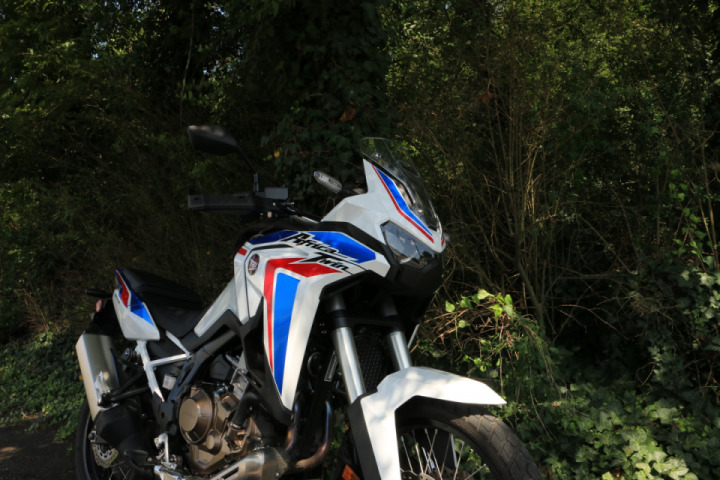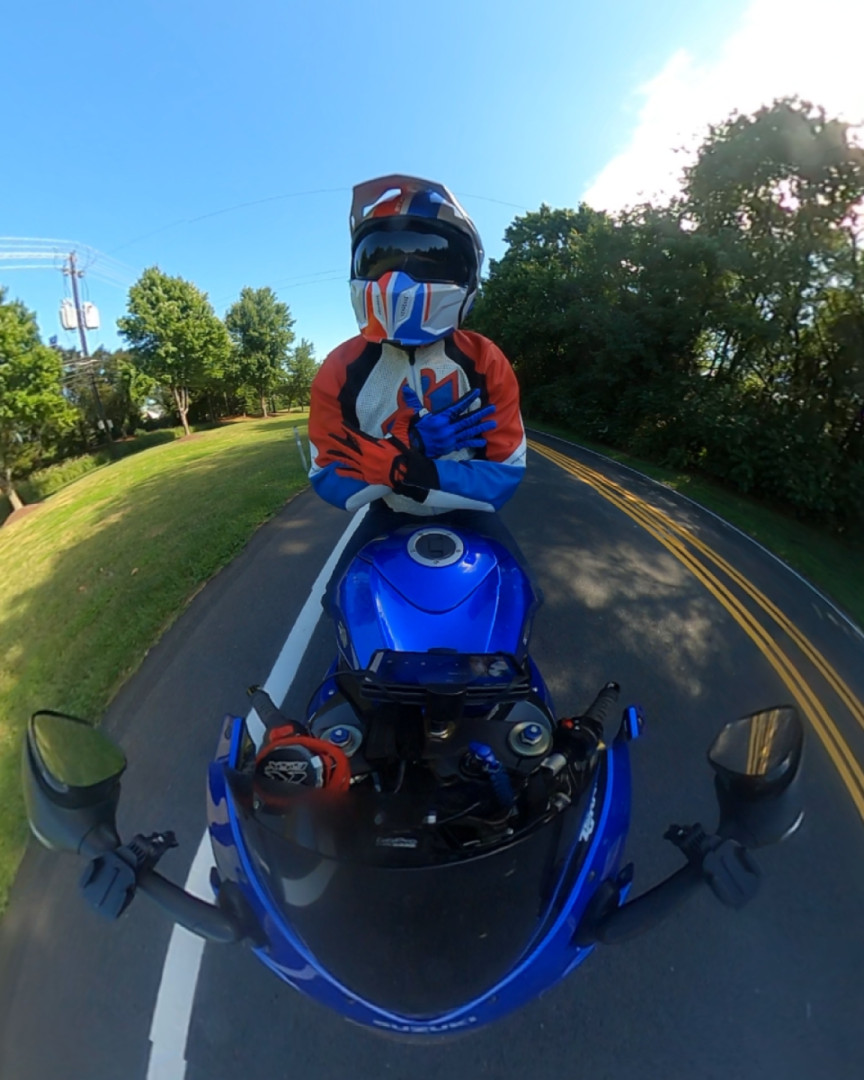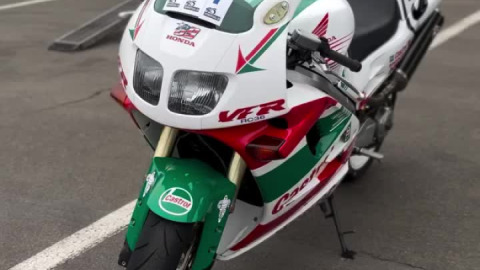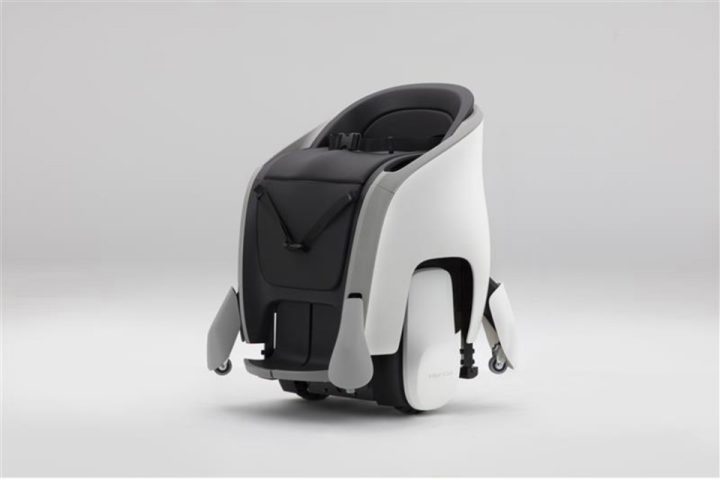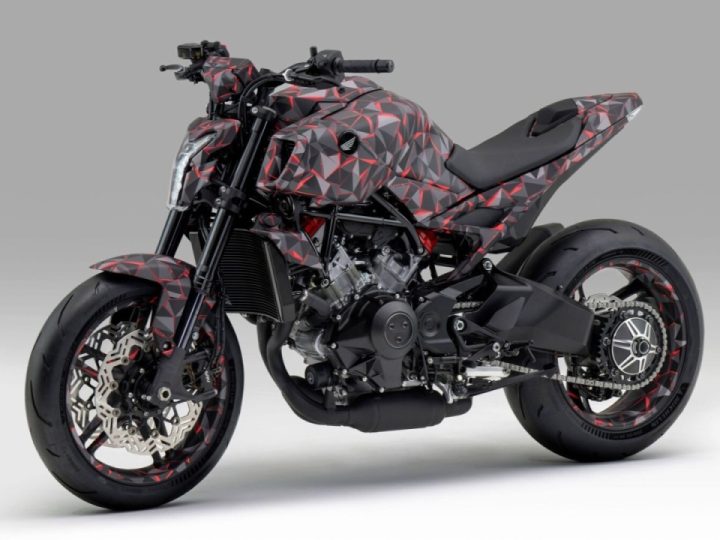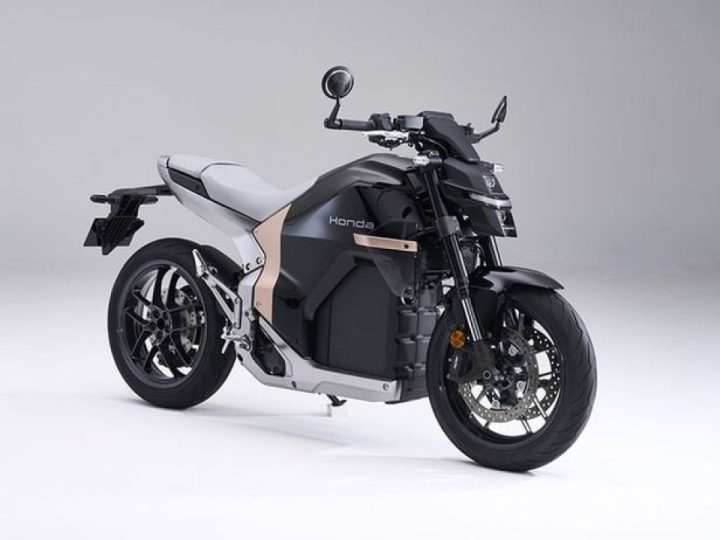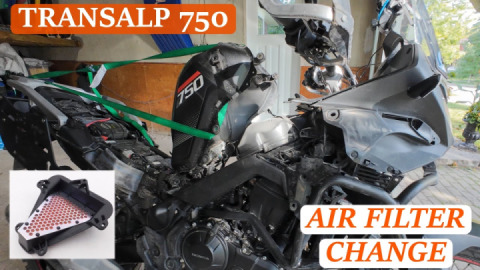Honda Motor Co., Ltd. today held the world premiere of advanced future safety technologies Honda is currently developing for the realization of a society where everyone sharing the road will be liberated from the risk of traffic collisions and enjoy freedom of mobility with total peace of mind.
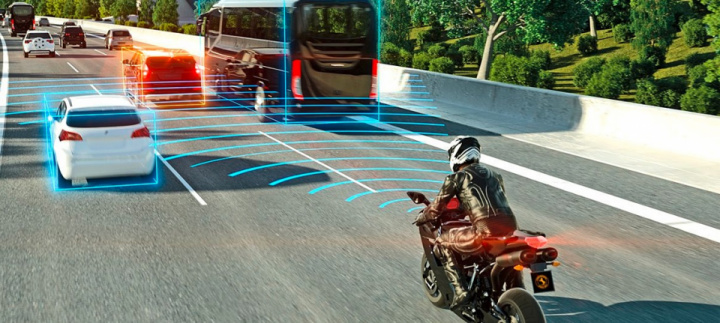
Honda will strive to attain its goal of realizing “zero traffic collision fatalities involving Honda motorcycles and automobiles globally by 2050” utilizing two key technologies. One is the world’s first*1 artificial intelligence (AI)-powered “Intelligent Driver-Assistive Technology” providing assistance that is suited to the ability and situation of each individual to reduce driving errors and risks, helping the driver achieve safe and sound driving. The other is the “Safe and Sound Network Technology” which connects all road users, both people and mobility products, through telecommunications, making it possible to predict potential risks and help people avoid such risks before collisions actually occur.
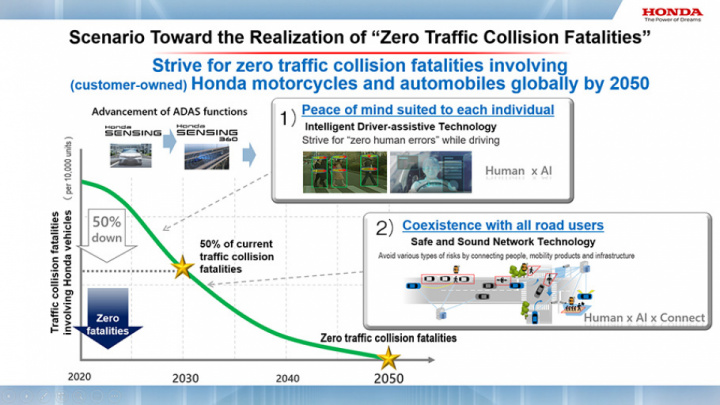
Realization of “zero traffic collision fatalities by 2050”
represented by the global safety slogan “Safety for Everyone,” Honda has been pursuing the research and development of safety technologies from the perspective of both hardware and software.
For the pursuit of a collision-free society, Honda will expand the introduction of Honda SENSING 360, a recently announced omnidirectional safety and driver-assistive system, to all models to go on sale in all major markets by 2030. Moreover, Honda will continue working to expand application of a motorcycle detection function and further enhance functions of its ADAS (advanced driver-assistance system).
Furthermore, Honda also will continue to make progress in expanding application of motorcycle safety technologies and offering of safety education technologies (Honda Safety EdTech). Through these initiatives, Honda will strive to reduce global traffic collision fatalities involving Honda motorcycles and automobiles by half*2 by 2030.
Beyond that, Honda will strive to realize its ambitious goal of “zero traffic collision fatalities by 2050” through establishment of future safety technologies at the earliest possible timing.
1) Safety suited to each individual:
Aiming for “zero human error” in driving with the “Intelligent Driver-Assistive Technology”
- Honda has unraveled the factors behind human errors through its original fMRI*3-based study of the human brain and analysis of risk-taking behaviors.
- The system presumes predictors of driving errors based on information obtained through a driver monitoring camera and pattern of the driving operations.
- This technology is being developed to enable each individual driver to mitigate driving errors and enjoy mobility without any sense of anxiety.
- Honda will strive for establishment of underlying technologies during the first half of the 2020s, with practical application during the second half of the 2020s.
With the goal to unravel underlying causes of driving errors that make the driver feel anxious, Honda has been conducting research and development of “technologies to understand people” with an original method that utilizes fMRI*3.
In addition to technologies to understand human behavior and conditions, which Honda has amassed to date, the “Intelligent Driver-Assistive Technology” unveiled today, the world’s first such technology, uses ADAS sensors and cameras to recognize potential risks in the vehicle’s surroundings, which enables AI to detect driving risks. At the same time, AI will determine optimal driving behavior on a real-time basis and offer assistance suited to the cognitive state and traffic situations of each individual driver.
With the next-generation driver-assistive functions currently under research and development, Honda will strive to offer the new value of “error-free” safety and peace of mind which are suited to the driving behavior and situation of each individual driver and keep them away from any potential risks.
Three values Honda will offer with its next-generation driver assist technology
- No driving operation errors (Operational assist): Vehicle offers AI-based assist to reduce drifting and prevent a delay in operations.
- No oversight / No prediction errors (Cognitive assist): Vehicle communicates risks with visual, tactile and auditory sensations.
➣Technologies in R&D phase: Risk indicator, seatbelt control and 3D audio. - No errors due to daydreaming and careless driving (Attentiveness assist): Vehicle helps reduce driver fatigue / drowsiness
➣Technologies in R&D phase: Bio feedback / vibration stimulus through the seatback
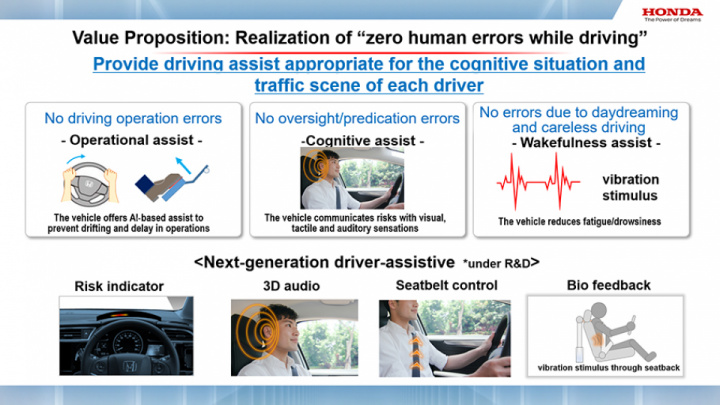
From here onward, Honda will further advance the “Intelligent Driver-Assistive Technology” unveiled today and continue making progress in development with the goal to establish underlying technologies during the first half of the 2020s, then launch practical applications during the second half of the 2020s.
With this technology, Honda will advance the conventional driver assist which helps the driver avoid risk while it is occurring to the AI-powered driver assist which will keep the driver away from the risks and strive to completely eliminate human errors, which are the cause of over 90% of traffic collisions*4.
2) Safe coexistence of all road users:
Establishment of the “Safe and Sound Network Technology” which connects all road users through telecommunication
- System understands / recognizes the situation and surrounding environment of each driver and road user.
- Through the communication network, information about potential risks in the traffic environment will be aggregated in the server, and risks are predicted using the reproduction of the traffic environment in the virtual space.
- System derives the most appropriate support information, communicates it to each road user and encourages them to take actions to avoid potential risk before it actually happens.
- Honda will accelerate industrywide and public-private collaboration with an aim to standardize the technology in the second half of the 2020s.
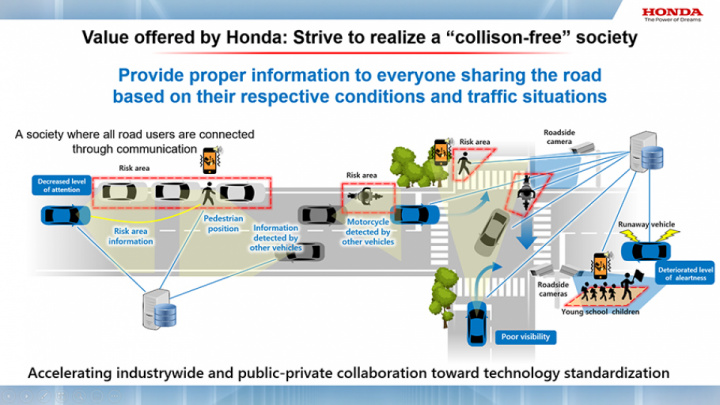
To realize a “collision-free” mobility society for all road users, Honda is striving to realize a “cooperative safety society” where utilization of telecommunication technologies will enable everyone sharing the road to be connected and coexist.
With the “Safe and Sound Technology,” information about potential risks in the traffic environment, which are detected based on information obtained from roadside cameras, on-board cameras and smartphones, will be aggregated in the server to reproduce that traffic environment in the virtual space. In that virtual space, in consideration of the conditions and characteristics of each individual road user, the system predicts / simulates the behaviors of road users at high risk of a collision. Then, the system derives the most appropriate support information to help the road users avoid risks.
Such support information will be communicated intuitively to automobile drivers, motorcycle riders and pedestrians through “cooperative risk HMI (human-machine interface),” which will make it possible for the system to encourage road users to take action to avoid a collision before it happens.
Aiming for real-world implementation of this technology after 2030, Honda will build the system and complete verification of effectiveness in the first half of the 2020s, then accelerate industrywide and public-private collaboration with an aim to standardize the technology in the second half of the 2020s.
Sourse: Honda
#Moto #Bike #Honda #Technologies














